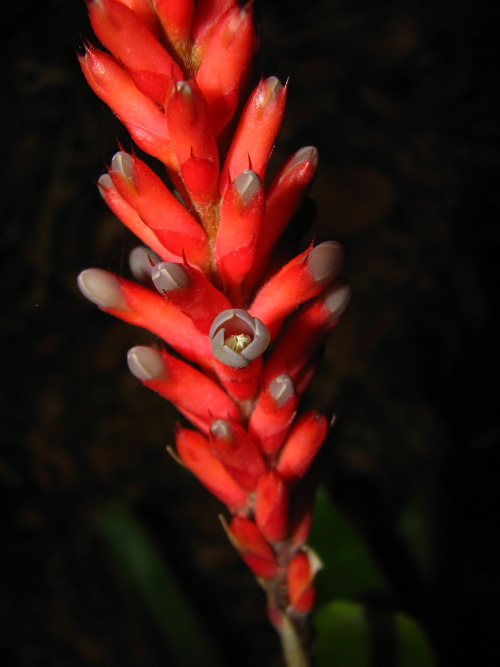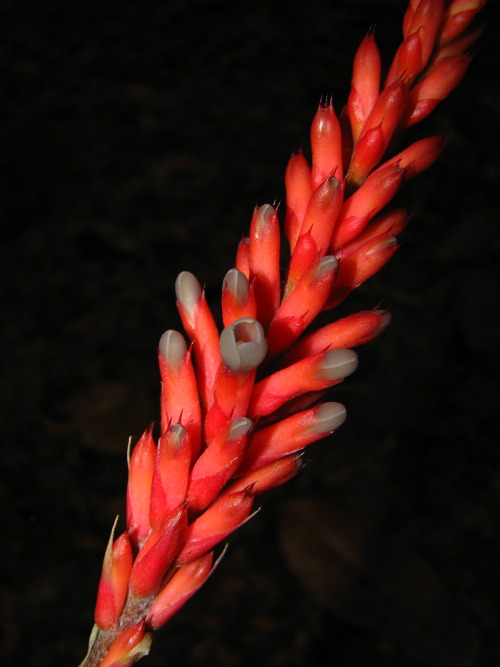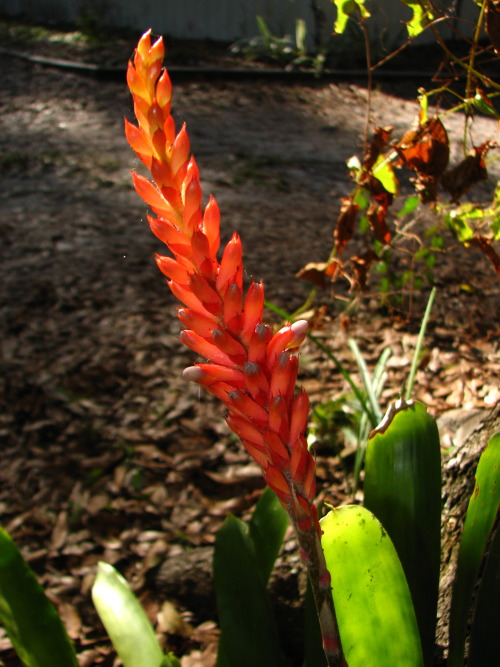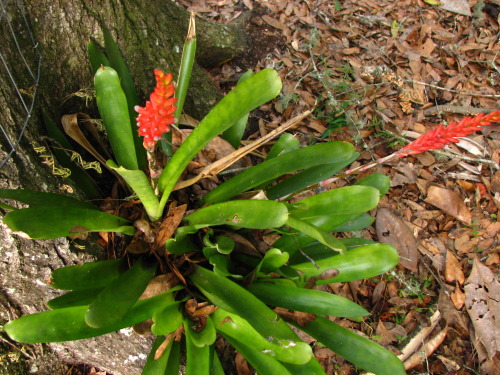 allthingsfern liked this
allthingsfern liked this randomc reblogged this from bromeliace and added:
Well I’ve been told this is an Aechmea apocalyptica hybrid, because of the muddy flower color. The real species A....
electricladyboy liked this
flora-file liked this
estherks liked this
labreh liked this
 kihaku-gato liked this
kihaku-gato liked this kitchengardener liked this
bromeliace posted this




Scientific Name - Aechmea apocalyptica hybrid
Common Name - Orange Matchstick Bromeliad
Place of Origin - Brazil
Status - Not known
Edit: I’ve been told that this is an A. apocalyptica hybrid, because of the muddy flower color. The real Aechmea apocalyptica species has bright blue flowers, it’s still a nice plant though.
This is another plant in the Ortgiesia subgenus of Aechmea, most of which have proven to be cold hardy in my area. This is a smaller aechmea species with spineless, plain green leaves. Uninteresting out of flower, it really puts on a show when it flowers in winter, with a bright orange inflorescence and pale blue flowers that extend well above the foliage.
I have mine growing up against the trunk of a Live Oak tree, so it gets nearly full shade, but it would probably take a lot more sun. The tree provides frost protection, but this plant has gone through at least 3 winters without damage. It produces pups on short stolons, so it would probably climb nearby supports in time. It pups pretty well, not as well as Aechmea gamosepala, but it’s not a stingy pupper in the least bit.
Because of its plain foliage, it would do best as a landscape plant, where you leave it alone, so it will clump and flower en masse.